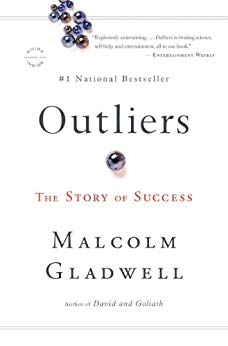

This article is an excerpt from the Shortform summary of "Outliers" by Malcolm Gladwell. Shortform has the world's best summaries of books you should be reading.
Like this article? Sign up for a free trial here .
What is the Matthew Effect? Why does it determine if someone is successful or not? Learn about why the Matthew Effect suggests the rich get richer, and the poorer get poorer.
The Benefits (and Harm) of the Matthew Effect
Early opportunities are important because they tend to snowball into greater and greater opportunities over time.
Just as a few dollars invested in the stock market can grow to thousands over a lifetime, a small advantage can compound over the months or years, leading to huge successes later on. This is called the Matthew Effect.
A passage in the Gospel of Matthew reads, “For unto every one that hath shall be given, and he shall have abundance. But from him that hath not shall be taken away even that which he hath.” In other words, the Matthew Effect is the situation where those who receive opportunity tend to acquire additional opportunities. Those who receive initial disadvantages tend to accumulate further disadvantage.
For example, imagine two families. One is well-off and the other is not, and both have daughters who dream of being professional cellists. The well-off parents send their daughter to a private instructor, which the other family can’t afford. The second family encourages their daughter to play in her school’s orchestra, which practices once a week.
Who has the better chance at becoming a successful cellist? While both children may start with the same skill level and potential, the initial advantage of the first child snowballs—a private teacher leads to more individualized instruction, which leads to a quicker progression through skill levels, which leads to more confidence in cello skills, which leads to better performance, and so on. This is the Matthew Effect at work.
Disadvantages also accumulate in the Matthew Effect. For the second child, playing in the orchestra of a big school means less individual attention. Less attention means less explicit instruction, which leads to fewer skills developed and lower performance, which means to even less attention, and so on.
Matthew Effect Example: Early Birthdays for U.S. Students
Among students in the same grade, older students (those born early in the calendar year rather than in December) tend to perform better academically. Again, this Matthew Effect discrepancy has to do with cutoff dates.
The Matthew Effect for the Oldest and Youngest Students in a Grade
Young children pass through the stages of development quickly. When a child begins kindergarten, an age difference of even a few months significantly affects a child’s readiness to learn.
When it comes to starting school, a lot of parents think the sooner the better. But there are advantages to waiting. If your child turns 5 in December, he may be in a grade with kids born in January or February of the same year, meaning many of his peers will be older. Like the Canadian hockey players born in January, children born early in the calendar year are more developmentally mature. Their brains are more developed and they pick up academic skills more quickly.
This initial opportunity paves the way for older students to be singled out for gifted programs and advanced classes. Here’s how the Matthew Effect works in schools: because teachers believe a child is more academically capable than her peers (because she’s faster at picking up skills), she becomes more academically capable than her peers (due to the advanced education and opportunities teachers give her).
The advantages given to older students in each grade snowballs, and the gap between the academic performance of older and younger peers widens as kids get older. A study of 4th graders tested in math and science found that the oldest children in the grade scored 4-12 percentile points higher than the youngest, even when the youngest and oldest were intellectually equivalent.
Surprisingly, the Matthew Effect academic gap persists even into college. One study found that the youngest students in each class at 4-year colleges were underrepresented by 11.6%. For some kids, the initial disadvantage of being a little younger than their peers turns into the large disadvantage of not going to college.
———End of Preview———

Like what you just read? Read the rest of the world's best summary of "Outliers" at Shortform . Learn the book's critical concepts in 20 minutes or less .
Here's what you'll find in our full Outliers summary :
- What makes some people outliers, and most others not
- Why some genius outliers end up failing in life
- Why Asians are good at math, and other curiosities of culture






